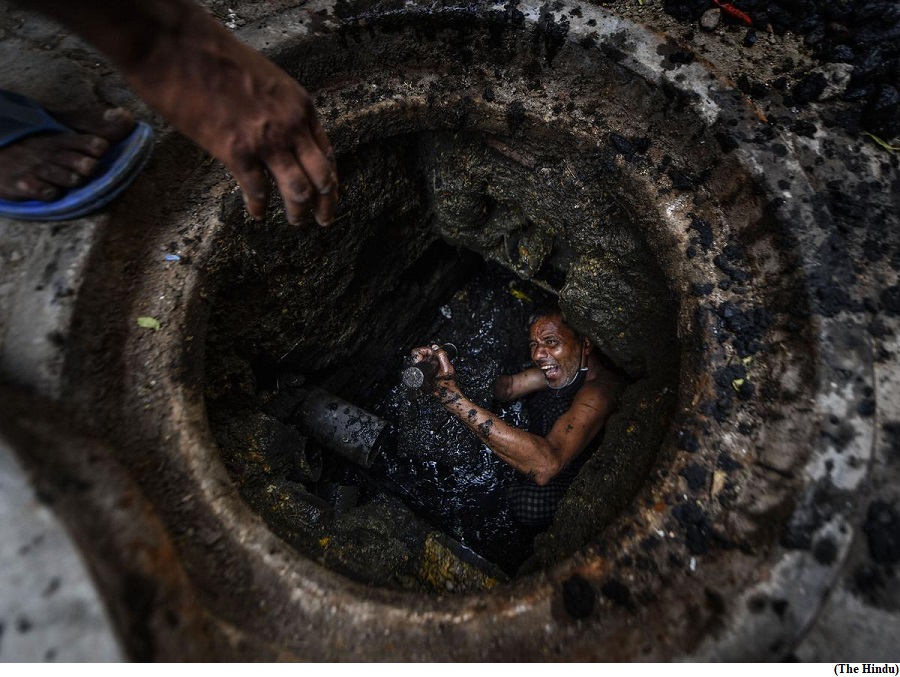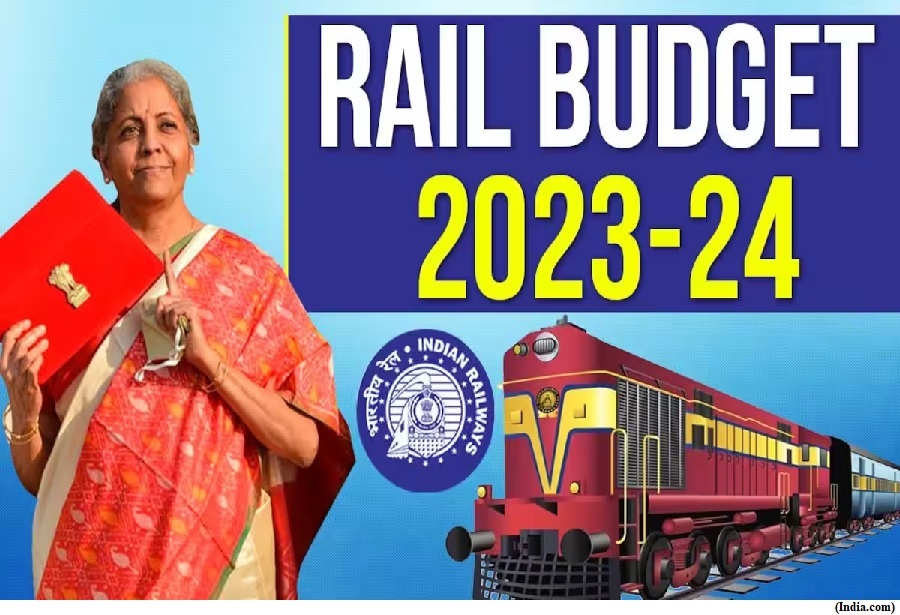Centre pitches for 100% switch to mechanised sewer cleaning (GS Paper 2, Social Justice)

Why in news?
- Nearly a ₹100-crore allocation was made in 2023 Budget for the newly named NAMASTE (National Action Plan for Mechanised Sanitation Ecosystem) scheme.
- Finance Minister said the Union government was looking to enable 100% mechanical desludging of septic tanks and sewers in all cities and towns.
NAMASTE scheme:
- The NAMASTE scheme was launched in 2022, subsuming the already existing Self Employment Scheme for Rehabilitation of Manual Scavengers (SRMS).
- Since manual scavenging (humans collecting human waste by hand) was no longer practised in India, the next goal was to eliminate hazardous cleaning of sewers and septic tanks.
- As part of the NAMASTE scheme, the guidelines for which are close to being finalised, the Social Justice Ministry intends to first enumerate the number of people engaged in hazardous cleaning of sewers and septic tanks across 500 AMRUT (Atal Mission for Rejuvenation and Urban Transformation) cities and then proceed with its plans.
- The NAMASTE scheme, among other things, provides for capital subsidies to sewer cleaners on the purchase of sanitation machinery, training of workers, and loan subsidies on sanitation equipment.
Implementation:
- It is a joint project of Department of Drinking Water and Sanitation, Ministry of Social Justice and Empowerment and the Ministry of Housing and Urban Affairs (MoHUA).
Allocation to Social Justice Ministry:
- In 2023 Budget, the Social Justice Ministry has allocated ₹97.41 crore for the NAMASTE scheme, with no allocation for the SRMS programme.
Union Budget 2023-24: Record Rs 2.4 lakh crore for Railways
(GS Paper 3, Economy)
Why in news?
- Recently, Finance Minister allocated Rs 2.40 lakh crore for the Railways for 2023-24.
- The outlay is Rs 1 lakh crore more than the Rs 1.40 lakh crore allocated to the Railways last fiscal. This is about nine times the outlay made in 2013-14.

Key Highlights:
- With increased passenger traffic, the Railways to refurbish more than 1,000 coaches of premier trains such as Rajdhani, Shatabdi, Duronto, Humsafar and Tejas. The interiors of these coaches will be improved with a modern look and for enhanced passenger comfort.
- 100 critical transport infrastructure projects for last- and first-mile connectivity for coal, fertiliser and food grain sectors have been identified and will be taken up on a priority basis with investment of Rs 75,000 crore, including Rs 15,000 crore from private sources.
- In 2023, the thrust will be on increasing the number of Vande Bharat trains, introducing hydrogen-powered trains, laying new tracks and completing the Ahmedabad-Mumbai bullet train project.
Vande Bharat & Metro:
- Vande Bharat Express would remain one of their major areas of focus. Besides the Perambur Integral Coach Factory, the Vande Bharat Express would now also be rolled out from three more factories in Sonepat (Haryana), Latur (Maharashtra) and Raebareli (UP).
- With high speed Vande Bharat trains set to hit the tracks, the allocation for track renewal has been increased from Rs 15,388.05 crore in RE 2022-23 to Rs 17,296.84 crore in 2023.
- A new version of the Vande Bharat Express called “Vande Metro” would be launched for suburban passengers.
- The maximum speed limit of Vande Metro would be around 120 km – less than Vande Bharat Express that can clock an hourly maximum speed of 180 km. Vande Metro would, however, have better acceleration than the Vande Bharat Express. It would be a world-class shuttle train.
Other projects:
- New projects for FY 2023-24 would also include the indigenously built hydrogen trains (which use hydrogen as fuel). These trains will be introduced in heritage circuits, with the first such train to run between Kalka and Shimla from December.
- The double lines would be laid over 2,800 km, gauge conversion would be carried out over 150 km and new lines over 600 km would be constructed.
- Other big-ticket item on the agenda of the Railways was upgradation of railway stations. As many as 1,275 stations, including New Delhi, Mumbai, Kanpur, would be upgraded.
Bring back Dodo: Gene company plans to revive bird that has been dead for 350 years
(GS Paper 3, Science and Tech)
Why in news?
- It was in 1662 when humans last reported the sighting of the flightless bird Dodo. For over 350 years since then, the bird has remained extinct, but soon it could be brought back from the dead.
- Gene editing company Colossal Laboratories & Biosciences has now announced plans to resurrect the bird.
About Dodo:
- The last sighting of the bird was reported on the island of Mauritius, which is east of Madagascar in the Indian Ocean. While the bird was endemic to the region, it went extinct after humans arrived in the region in the mid-17th century.
- While humans encroached on their environment, they were also hunted by other species including monkeys, and rats and the threat of rising sea levels also contributed.
Habitat & Traits:
- Researchers believe that the volcanic island of Mauritius was the dodo bird’s only home, likely due to its safety and plentiful resources. In fact, evolutionary traits indicate that living conditions were so ideal, the dodo bird ultimately became flightless and therefore, unable to leave.
- The bird used to reproduce by laying just one egg a year due to a stress-free environment.
- The bone structure suggests that chicks hatched sometime in or around August at an average height of 8 inches, growing very quickly into adulthood.
- The birds would feed on rocks along with fruit, nuts, seeds, bulbs, shellfish, and the occasional crab.
Resurrecting Dodo:
- The Dallas company, which launched in 2021, also announced it had raised an additional $150 million in funding. To date, it has raised $225 million from wide-ranging investors.
- The company is testing tools to tweak several parts of the genome simultaneously and working on technologies for what is sometimes called an artificial womb.
- They plan to study the DNA difference between the Dodo and its close relative the Nicobar pigeon to better understand what the genes are that really make a dodo.
Way Forward:
- They will then try to edit Nicobar pigeon cells to make them resemble dodo cells and attempt to put the tweaked cells into developing eggs of other birds, such as pigeons or chickens, to create offspring that may in turn naturally produce dodo eggs.
- The concept is still in an early theoretical stage for dodos.





